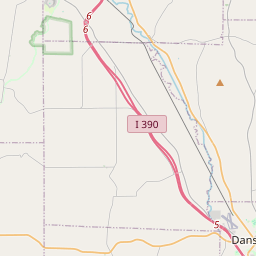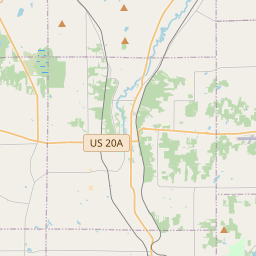Old Genesee Valley Canal
Historical marker location:
Sonyea, New York
( Marker is on Sonyea Road (New York State Route 36), on the right when traveling north.)
Marker installed: 1940













© OpenStreetMap contributors
Loading...
Searching for other points of interest within 3 miles of this location.The first American museum was founded in New York City in 1792. It was called the American Museum, and it was located in what is now City Hall Park.
About Livingston County
Livingston County Timeline
Livingston County, located in western New York, has a rich history that dates back to its establishment in 1821. The area was originally inhabited by the Seneca Nation, part of the Iroquois Confederacy, who used the Genesee River as a vital waterway for transportation and trade. European exploration of the area began in the 17th century, with French and British settlers establishing trade networks and alliances with the Native American tribes.
In the aftermath of the American Revolution, the Sullivan Campaign of 1779 against the Iroquois Confederacy led to the displacement of the Seneca people from their ancestral lands. This opened up the area for settlement by European-Americans, and Livingston County was named after Robert R. Livingston, a prominent Founding Father and landowner in the region.
The early 19th century saw the establishment of towns and villages within Livingston County, including the county seat, Geneseo. The construction of the Genesee Valley Canal in the 1830s further facilitated settlement and economic growth, with the canal serving as a crucial transportation route for the agricultural and manufacturing industries.
During the mid-19th century, Livingston County played a significant role in the Abolitionist Movement and the Underground Railroad. Prominent abolitionists such as Frederick Douglass and William Morgan used the county as a base of operations, and many residents were involved in helping enslaved individuals escape to freedom.
Today, Livingston County is known for its scenic landscapes, historic sites, and strong sense of community. The region has embraced its agricultural heritage, with farming and agribusiness remaining important economic sectors. The county also boasts educational institutions, such as the State University of New York at Geneseo, that contribute to the cultural and intellectual life of the area.
In the aftermath of the American Revolution, the Sullivan Campaign of 1779 against the Iroquois Confederacy led to the displacement of the Seneca people from their ancestral lands. This opened up the area for settlement by European-Americans, and Livingston County was named after Robert R. Livingston, a prominent Founding Father and landowner in the region.
The early 19th century saw the establishment of towns and villages within Livingston County, including the county seat, Geneseo. The construction of the Genesee Valley Canal in the 1830s further facilitated settlement and economic growth, with the canal serving as a crucial transportation route for the agricultural and manufacturing industries.
During the mid-19th century, Livingston County played a significant role in the Abolitionist Movement and the Underground Railroad. Prominent abolitionists such as Frederick Douglass and William Morgan used the county as a base of operations, and many residents were involved in helping enslaved individuals escape to freedom.
Today, Livingston County is known for its scenic landscapes, historic sites, and strong sense of community. The region has embraced its agricultural heritage, with farming and agribusiness remaining important economic sectors. The county also boasts educational institutions, such as the State University of New York at Geneseo, that contribute to the cultural and intellectual life of the area.
Livingston County Timeline
This timeline provides a concise overview of the key events in the history of Livingston County, New York.
- 1683 - Livingston County is part of Albany County, which includes all of present-day New York State.
- 1781 - Albany County is divided, and Livingston County is part of Tryon County.
- 1784 - Tryon County is divided, and Livingston County is part of Ontario County.
- 1802 - Genesee County is formed from parts of Ontario County, and Livingston County is part of Genesee County.
- 1821 - Livingston County is officially established as a separate county.
- 1823 - Avon, the first town in Livingston County, is incorporated.
- 1825 - Mount Morris, Caledonia, Livonia, and Lima are incorporated as towns in Livingston County.
- 1831 - Geneseo is incorporated as a town in Livingston County.
- 1850s - The railroad reaches Livingston County, spurring growth and economic development.
- 1870s - Livonia Station becomes a major railroad hub in the county.
- 1920s - The Great Depression hits Livingston County, causing economic decline.
- 1940s - Livingston County experiences a resurgence in agriculture and manufacturing industries.
- 1990s - Tourism becomes an important part of the county's economy.
- Present - Livingston County continues to thrive with a diverse economy and a rich history.